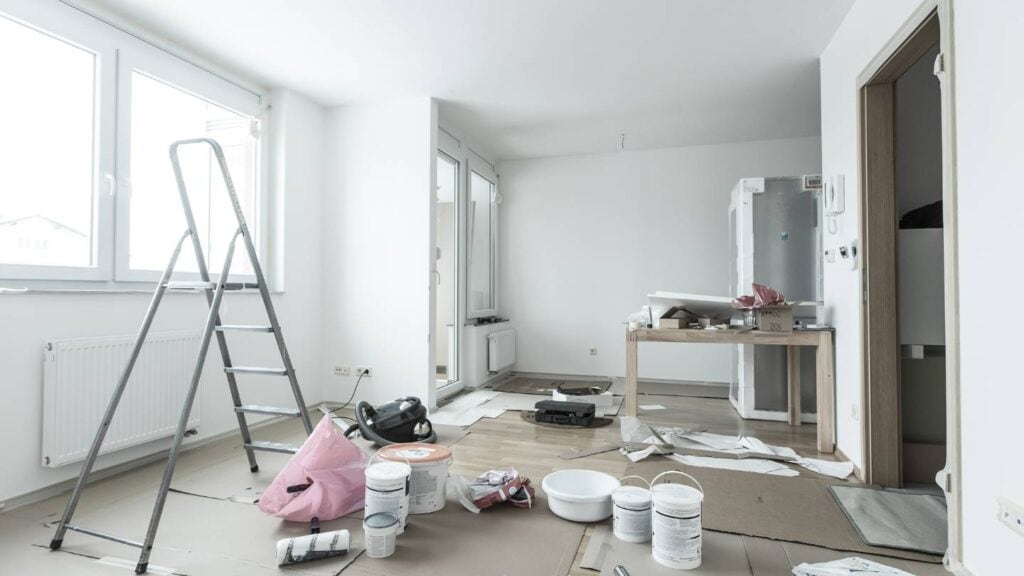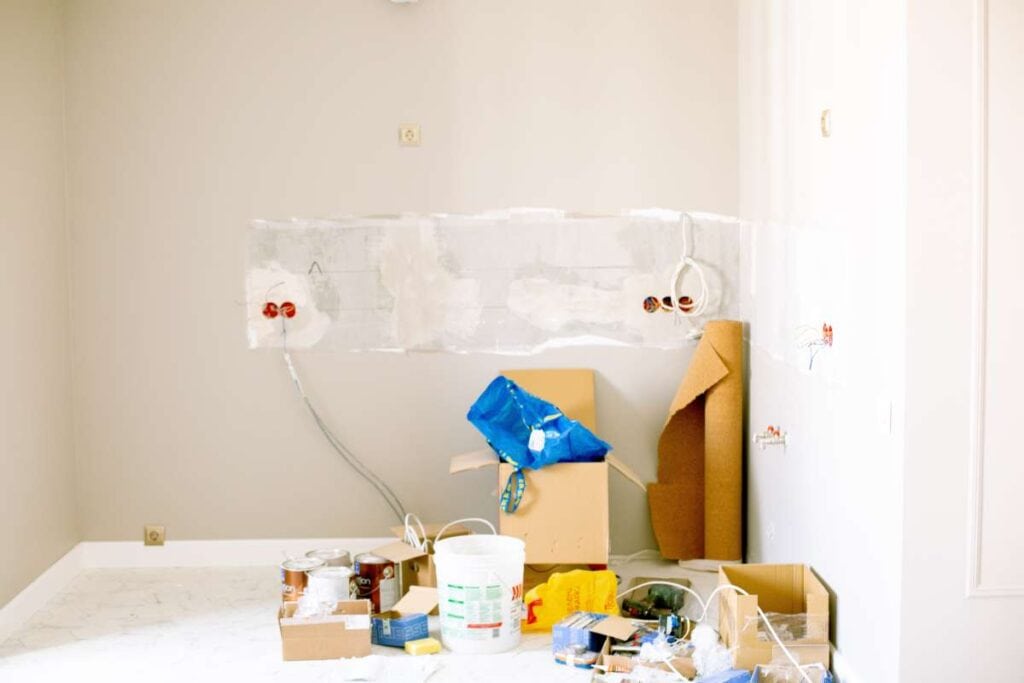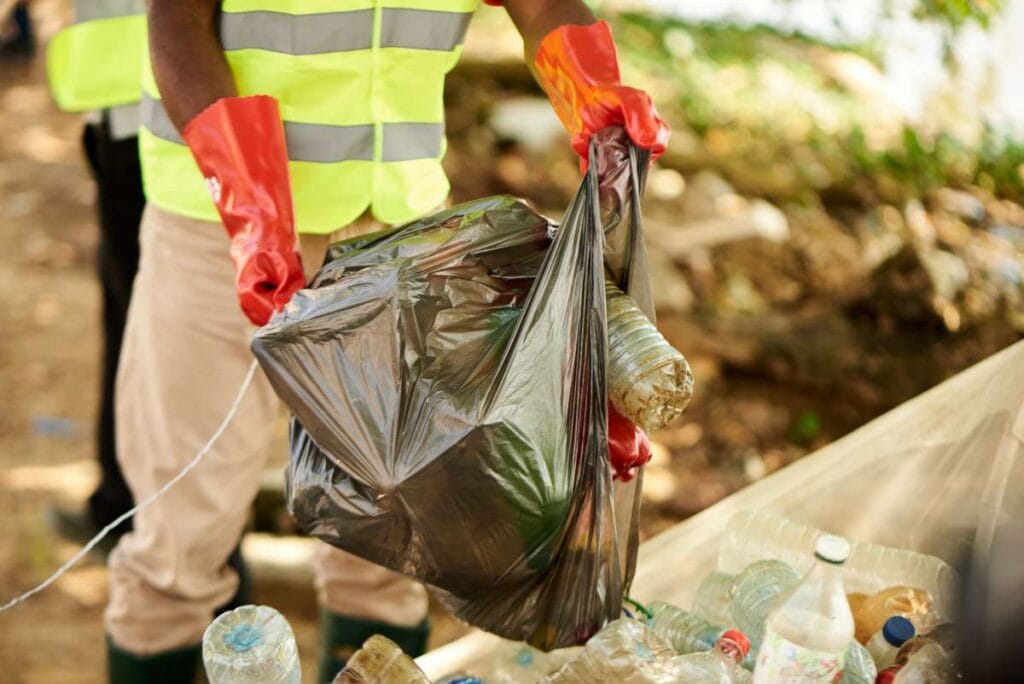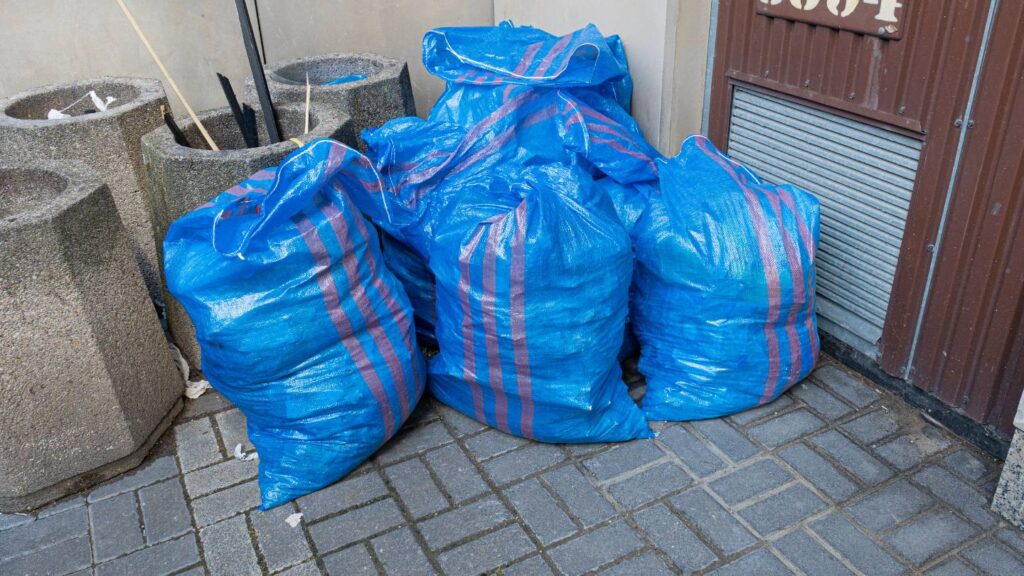If you don't take precautions, the drywall, plaster, wood scraps, broken tile, and construction dust accumulating after a house remodeling can eventually become your new furniture and decorations.
After a home improvement project, you might wonder what to do with all the trash. Ultimately, where you are required to dispose of debris from restoration projects may be dictated by local, state, and federal legislation. Removing debris from a remodel can be easy, though. Here are a few things to remember to ensure the garbage collection for your home renovation goes off without a hitch.
Consult Your City
The laws and regulations regarding the disposal of construction debris and other municipal garbage vary throughout many towns, cities, and municipalities. The typical weekly or biweekly garbage day is fine for some locations when picking up this trash.
Still, it's a good idea to contact the trash management department of your city or municipality to find out what kinds of construction debris they'll collect. Please do so to avoid weeks of unsightly rubbish piling up in front of your house. Before putting any construction material out front, ensure you have permission from the homeowners association since they can punish residents for garbage.
Also, check with your local government to see if a transfer centre or public dumping spot accepts various construction trash. Particular locations are designated at many public buildings to dispose of certain materials, such as lumber, brick, and outdated equipment.

Find a Private Trash or Waste Removal Service
Homeowners can hire dumpsters or arrange trash pickup through private waste management businesses. Homeowners can load the roll-off container to capacity when renting a dumpster for more complicated projects.
The waste management firm will come to your home and arrange to take up the roll-off dumpster. Compared to waiting for the city's trash management to collect the demolition debris, renting a dumpster is less restrictive regarding what you may put in it.
What Trash Does Home Renovation Generate?
Renovating your home might generate a lot of trash that needs to be disposed of or recycled. Depending on the nature of your renovation, There are many types of construction and remodelling trash. But a handful of typical items always necessitate hauling away throughout home improvement projects.
Wood
So, you've decided to pull down a wall in your home to make more room. As part of the enlargement, you will likely have to remove the wood framework. Once the drywall is removed, you will find the wood frame that supports the wall from collapse. The frame has multiple engineered studs.
If you have a sledgehammer or reciprocating saw, dismantling a wood frame is rather easy. How many 2x4 wood studs do you need to dispose of, or will your city's rubbish management regulations determine how you do it? Regarding renovation debris removal, your city is more likely to collect a few studs than a whole room's worth.
Drywall
You will also require renovation garbage collection services for drywall, another typical building material. Also, there was a lot of drywall to dispose of in 2021 since businesses sold almost 28 billion square feet of it. For subsequent building projects, drywall can be recycled.
Gypsum, an important mineral for gardeners, is also present in the material. By improving the soil's fertility, gypsum facilitates plant and flower growth. Add a little drywall gypsum to your garden the next time you have drywall dust leftover from remodelling! Plants will be grateful.
Bricks
Bricks keep their distinctive shape and are one of the most multipurpose construction materials. Bricks are the most versatile construction material, with applications ranging from gardens to patios.
However, if the broken bricks from a building site or home improvement project are collecting dust in your yard, it may be time to dispose of them. Bricks that have seen better days can be collected and recycled at public recycling centres or handled by private waste management companies.
Old Appliances and Bathroom Fixtures
The majority of home improvement projects include the kitchen and bathroom. You may add value to your property and give yourself great satisfaction by renovating your kitchen or bathroom. However, old appliances and bathroom fixtures are part of the debris that needs to be removed during these house renovations.
People want to avoid dealing with the hassle of disposing of large appliances or old, bulky bathroom fixtures like sinks, so they put them off until the last possible moment. Recycling facilities and waste management firms in your community can be your allies when removing trash from renovations. Consider selling or donating any products that are still in good condition online.
Insulation
Insulation is another component that needs to be removed during renovations. The insulation should be discarded if it is old or worn out. Recycling old insulation or donating it to a charity like Habitat for Humanity's ReStore is possible.
Fiberglass insulation is relatively easy to work with. Disposing it using certain methods, such as placing it in garbage bags, is critical.
Innovative Methods for Rubbish Removal
Smart Skip Bins
One of the most significant innovations in home renovation rubbish removal is the introduction of smart skip bins. Traditional skip bins are given a technological upgrade, incorporating sensors to monitor the level of waste.
These sensors enable waste management companies to optimize collection routes, ensuring timely pickups and reducing unnecessary emissions. Additionally, some smart bins are equipped with compaction technology, allowing them to hold more waste, ultimately minimizing the number of pickups required.
Waste Segregation and Recycling Centers
In the quest for sustainability, waste segregation and recycling centres have become crucial in renovating rubbish removal. Homeowners and contractors can now utilize dedicated facilities that assist in sorting different types of waste, such as metal, wood, plastic, and glass. Advanced recycling technologies further enhance the efficiency of these centres, turning renovation waste into valuable resources.
On-site Waste Processing Units
Innovative on-site waste processing units are gaining popularity for their ability to handle renovation rubbish directly at the source. These compact units have shredders, crushers, and other processing machinery to break down wood, drywall, and plastics. This reduces the volume of waste and facilitates on-site recycling, minimizing the need for transportation to external processing facilities.
Mobile Recycling Units
Mobile recycling units have emerged as a game-changer in addressing the challenge of transporting renovation waste to recycling centres. These units can be stationed near renovation sites, providing an on-the-go solution for processing and recycling various materials. By bringing recycling capabilities closer to the source, these mobile units reduce transportation emissions and make the renovation rubbish removal process more sustainable.
Robotic Demolition and Deconstruction
The traditional methods of demolition and deconstruction generate a significant amount of waste. However, integrating robotics into these processes has led to more precise and controlled methods, minimizing unnecessary destruction and waste. Robotic arms equipped with advanced sensors can selectively dismantle structures, salvaging reusable materials and reducing the overall volume of waste generated during renovations.
3D Printing with Recycled Materials
3D printing technology is being used to repurpose renovation waste in a remarkable fusion of innovation and sustainability. Some companies are exploring using recycled materials, such as crushed concrete or plastic, in 3D printing for construction purposes. This provides a creative outlet for reusing waste and contributes to the development of eco-friendly building practices.
Community Recycling Initiatives
In many regions, community-based recycling initiatives are gaining traction. These initiatives encourage collaboration among homeowners, contractors, and local waste management services to manage and recycle renovation waste collectively. Such collaborations often include:
- Educational programs.
- Sharing resources.
- Establishing community recycling hubs.
- Fostering a sense of environmental responsibility within the community.
Blockchain for Waste Management
Integrating blockchain technology is transforming various industries, and waste management is no exception. Blockchain can create transparent and traceable waste generation, disposal, and recycling records. This ensures accountability in the renovation rubbish removal process and provides valuable data for optimizing waste management strategies on a broader scale.
Augmented Reality (AR) for Waste Sorting
AR technology is making its way into waste management by enhancing the efficiency of waste sorting processes. AR applications can assist workers in identifying and segregating different types of materials quickly and accurately. This reduces the chances of contamination and ensures that materials are properly sorted for recycling or proper disposal.
Biodegradable Building Materials
Looking beyond the removal stage, using biodegradable building materials is an emerging trend in sustainable construction. These materials break down naturally over time, reducing the environmental impact of renovation waste in the long run. Innovations in this area include biodegradable plastics, eco-friendly adhesives, and other construction components that minimize the ecological footprint of home renovations.
Is It Costly To Hire a Rubbish Removal Service?
The cost of hiring rubbish removal services can vary based on several factors, including the location, the volume and type of waste, the service provider, and any additional services required. Here are some key factors that influence the cost of rubbish removal services:
Location:
Prices for rubbish removal services can vary by region and even within different neighbourhoods of the same city. Areas with higher living costs and operational expenses generally have higher service rates.
Volume of Waste:
The amount of rubbish you need to be removed is a significant factor. Most rubbish removal services charge based on the volume or weight of the waste. Larger quantities or heavier materials may incur higher costs.
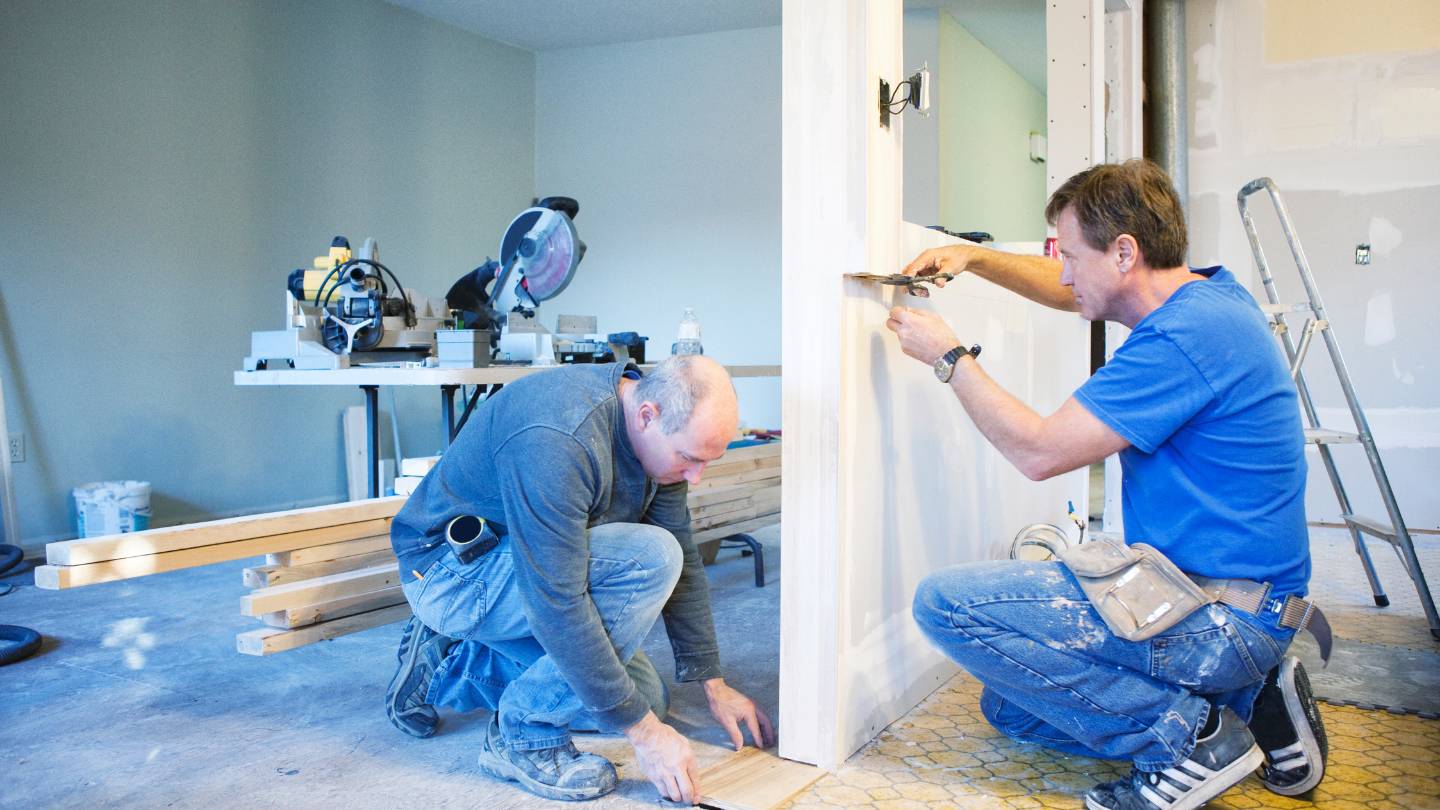
Type of Waste:
The type of waste being removed can impact the cost. Some materials may require special handling or disposal methods, and hazardous waste may incur additional fees. Sorting and recycling options may also affect the overall price.
Service Frequency:
Some rubbish removal services offer one-time pickups, while others provide regular scheduled services. Regular services may offer discounts or subscription-based pricing, but one-time services might have a flat fee or be based on the specific load.
Additional Services:
Additional services, such as same-day removal, extra labour for heavy lifting, or specialized disposal for certain items, can add to the overall cost. It's essential to clarify the scope of services included in the quoted price.
Accessibility:
The ease of access to the waste can affect pricing. If the rubbish is difficult to reach or requires additional effort for removal, the cost may increase.
Recycling Practices:
Some rubbish removal services prioritize recycling and environmentally friendly disposal methods. While this may contribute to a higher upfront cost, it aligns with sustainability goals and may be a worthwhile investment for those who prioritize eco-friendly practices.
Market Competition:
The presence of multiple rubbish removal service providers in a given area can lead to competitive pricing. It's worth obtaining quotes from different companies to compare rates and services.
Conclusion
Home renovation debris can be a serious concern because it can be used to create new furniture and décor. To guarantee proper disposal, check with your city's waste management department and local government for specific regulations on construction debris. Renting a dumpster or a roll-off container may be less restricted than waiting for the city's trash collection service to gather demolition debris.
Renovation projects frequently generate numerous forms of waste, such as wood, drywall, bricks, obsolete appliances and bathroom fixtures, and insulation. These items can be disposed of through local recycling and garbage management facilities, as well as by selling or giving any good condition articles online. Insulation should also be disposed of properly, either through recycling or donation to a charity such as Habitat for Humanity's ReStore.
Smart skip bins are one of the most significant advancements in home renovation waste removal. These bins include sensors that monitor waste levels, optimising collection routes and lowering emissions. Some smart bins are fitted with compaction technology, which allows them to retain more waste while reducing the number of pickups required. By adhering to these recommendations, homeowners may ensure that their home repair debris is appropriately disposed of and repurposed.
Waste segregation and recycling centres are critical for long-term remodelling waste removal. These facilities separate garbage into useful materials like metal, wood, plastic, and glass. On-site waste processing and mobile recycling equipment are useful for treating remodeling garbage at its source.
Robotic demolition and deconstruction technologies incorporate robots into the demolition and deconstruction processes, reducing waste generation. 3D printing with recycled materials is being utilised to repurpose renovation debris, helping to promote environmentally friendly building practices.
Content Summary
- The accumulation of drywall, plaster, wood scraps, broken tile, and construction dust after home remodeling can turn into furniture and decorations if precautions aren't taken.
- Disposal of debris after home improvement is subject to local, state, and federal legislation, so consulting your city or municipality is crucial.
- Check with your local government and homeowners association for regulations and permissions before putting construction materials out for garbage collection.
- Private trash or waste removal services, such as dumpsters, can be hired for more flexibility and convenience in disposal.
- Home renovation generates various types of trash, including wood, drywall, bricks, old appliances, bathroom fixtures, and insulation.
- Recycling or donating renovation materials like wood and drywall can be environmentally friendly and beneficial for gardening.
- Bricks from building sites or home improvement projects can be recycled at public recycling centers or through private waste management.
- Old appliances and bathroom fixtures from renovations can be disposed of using recycling facilities and waste management services.
- Insulation, if old or worn out, should be discarded properly, and fiberglass insulation can be recycled or donated to charities.
- Innovative methods for home renovation rubbish removal include smart skip bins with sensors for optimized collection routes and compaction technology.
- Waste segregation and recycling centers assist in sorting different types of waste, contributing to sustainability in renovation waste removal.
- On-site waste processing units with shredders and crushers reduce waste volume and facilitate on-site recycling.
- Mobile recycling units stationed near renovation sites provide on-the-go solutions, reducing transportation emissions.
- Robotic demolition and deconstruction minimize unnecessary destruction and waste by selectively dismantling structures.
- 3D printing with recycled materials, like crushed concrete or plastic, is being explored for sustainable construction.
- Community-based recycling initiatives encourage collaboration among homeowners, contractors, and waste management services for collective waste management.
- Blockchain technology is being integrated into waste management for transparent and traceable waste records.
- Augmented Reality (AR) assists in waste sorting processes, improving efficiency and reducing contamination.
- Biodegradable building materials are an emerging trend in sustainable construction, reducing the ecological footprint of home renovations.
- The cost of hiring rubbish removal services depends on factors like location, volume and type of waste, service frequency, and additional services required.
- Prices for rubbish removal services can vary by region and neighborhood due to different living costs and operational expenses.
- The volume of waste influences costs, with larger quantities or heavier materials incurring higher charges.
- The type of waste being removed can impact costs, especially if it requires special handling or disposal methods.
- Service frequency, whether one-time pickups or regular services, can affect pricing, with discounts offered for regular services.
- Additional services, like same-day removal or specialized disposal, can add to the overall cost of rubbish removal.
- Accessibility of the waste influences pricing, with difficult-to-reach rubbish potentially incurring higher costs.
- Some rubbish removal services prioritize recycling and environmentally friendly disposal methods, potentially leading to higher upfront costs.
- Market competition in an area can result in competitive pricing, prompting individuals to obtain quotes from different companies for comparison.
- It's essential to clarify the scope of services included in the quoted price to avoid any misunderstandings.
- Despite potential costs, investing in environmentally friendly rubbish removal aligns with sustainability goals and may be worthwhile for eco-conscious individuals.
Frequently Asked Questions
Professional trash removal services may manage domestic items, building debris, green garbage, electronic waste, and dangerous materials. They can handle many waste types and recycle or dispose of them.
Waste removal prices depend on volume, type, and location. Some firms charge by the amount of trash space in their trucks, while others offer fixed rates or customised quotes based on task requirements.
Professional trash removal services often recycle. To find recyclables, they actively sort at the collecting location. These things are recycled, helping sustainability and lowering waste disposal's environmental impact.
Scheduling trash removal is usually easy. Most services offer online or phone booking for convenient pickup times. Many removal firms attempt to respond quickly, especially for critical situations like relocation or building.
Professional trash hauliers handle dangerous materials legally and securely. Compliance with local legislation is ensured by thorough identification, containment, and disposal methods.
